When Thomas Glänzel restored a 16 mm black and white reversal film from the late 1950s he noticed that the splicing tape had become so dry that it popped off the celluloid. These chips of tape were very particular: As the glue had absorbed silver particles from the gelatin emulsion (a gradual process over many decades) each chip contained fragments of two half frames from the film stills. Glänzel placed these “contact copies” – a positive out of a positive – on glass microscope slides, like those used in medical laboratories, flattened them, and sealed them with synthetic resin. With the aid of a photo enlarger he blew them up into negative prints on photographic paper.
Our eye is untrained in the perception of negatives. When observed up close, these prints look blurry and bear an enigmatic aura. Stepping back, a figurative image becomes detectable.
The prints are presented together with a wooden box, which contains the microscope glass slides with the splicing tape. The title “Ghost Frames” was engraved on top with a soldering iron. (Gabriele Jutz)
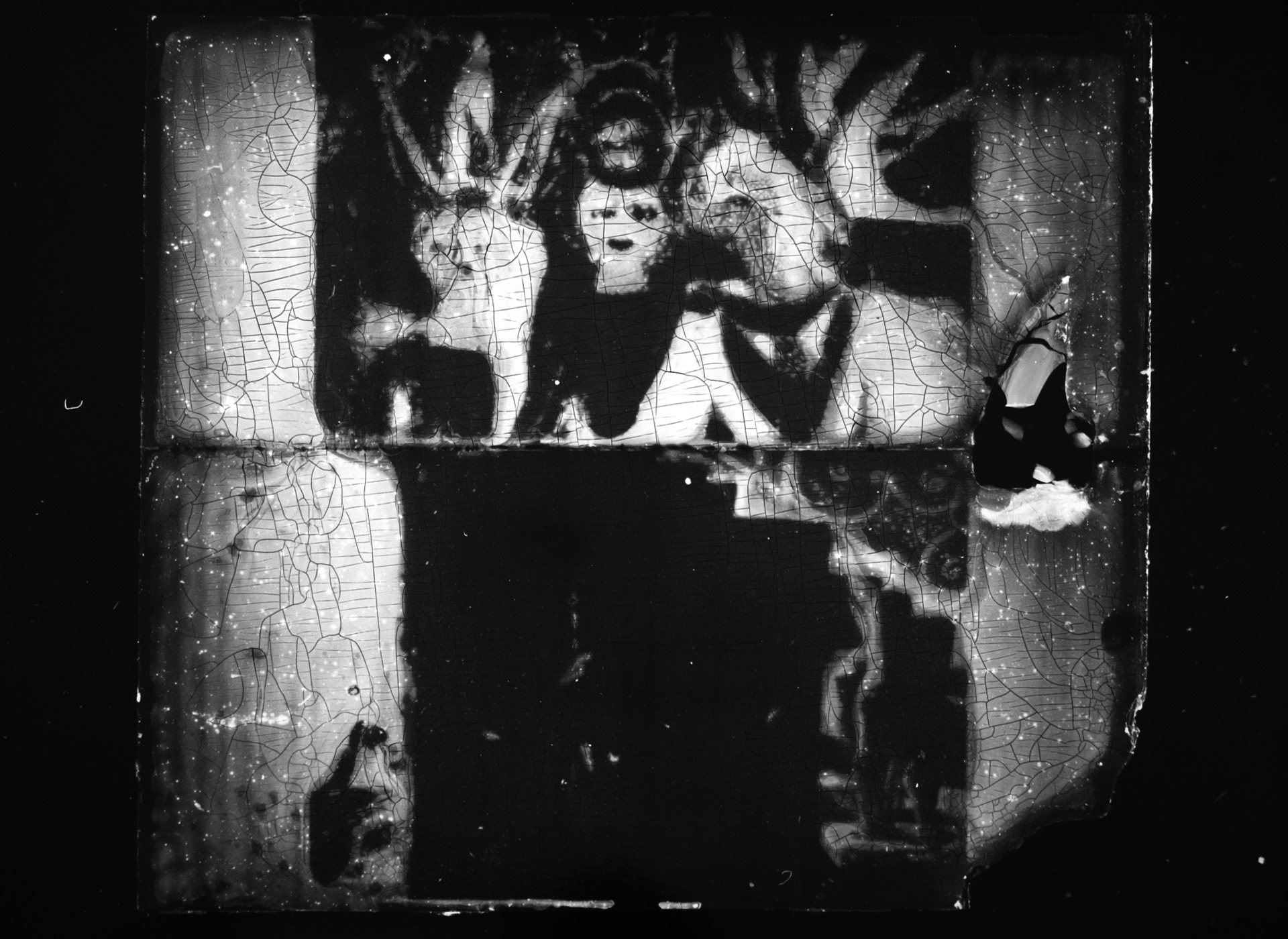 |
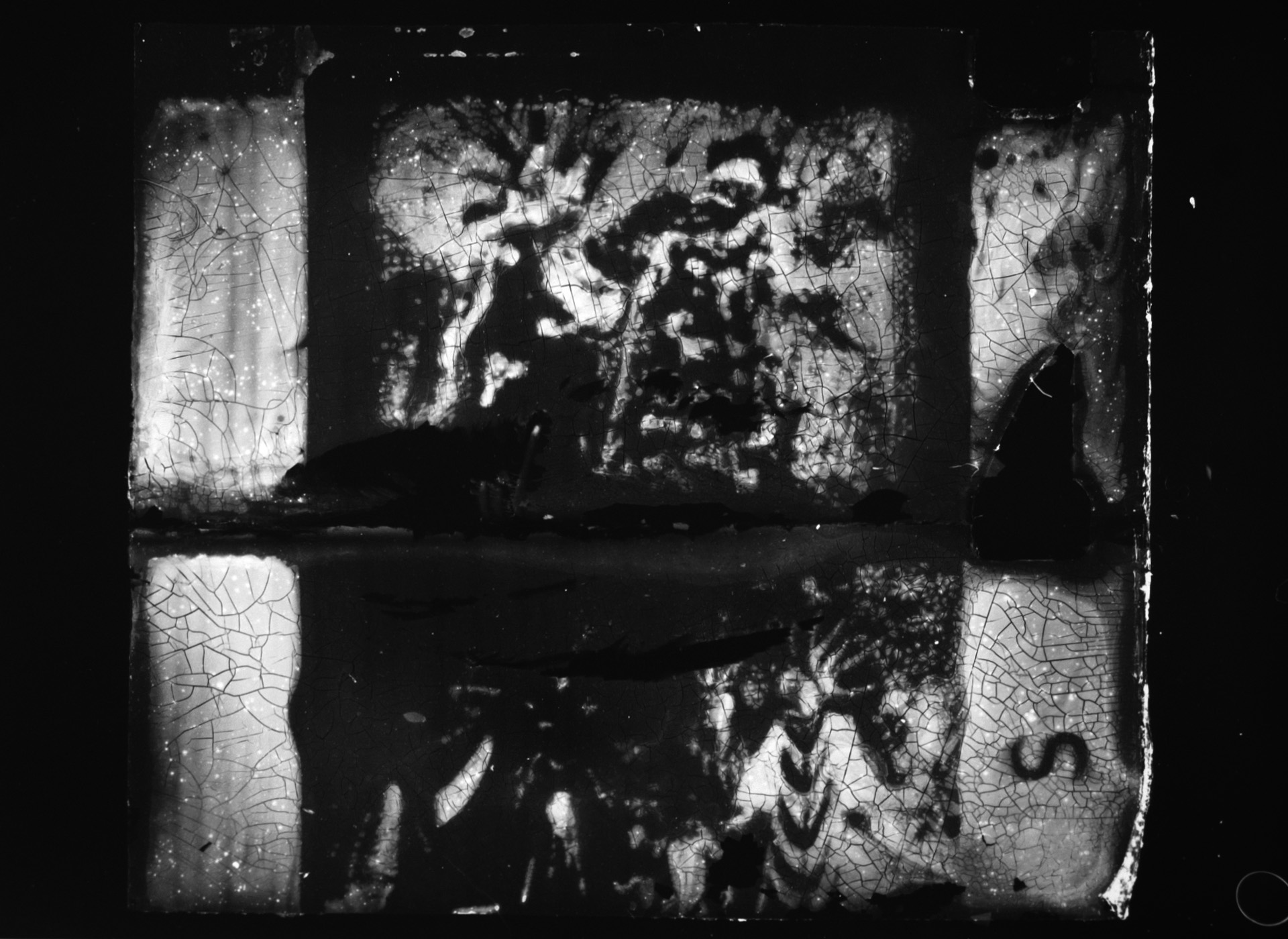 |
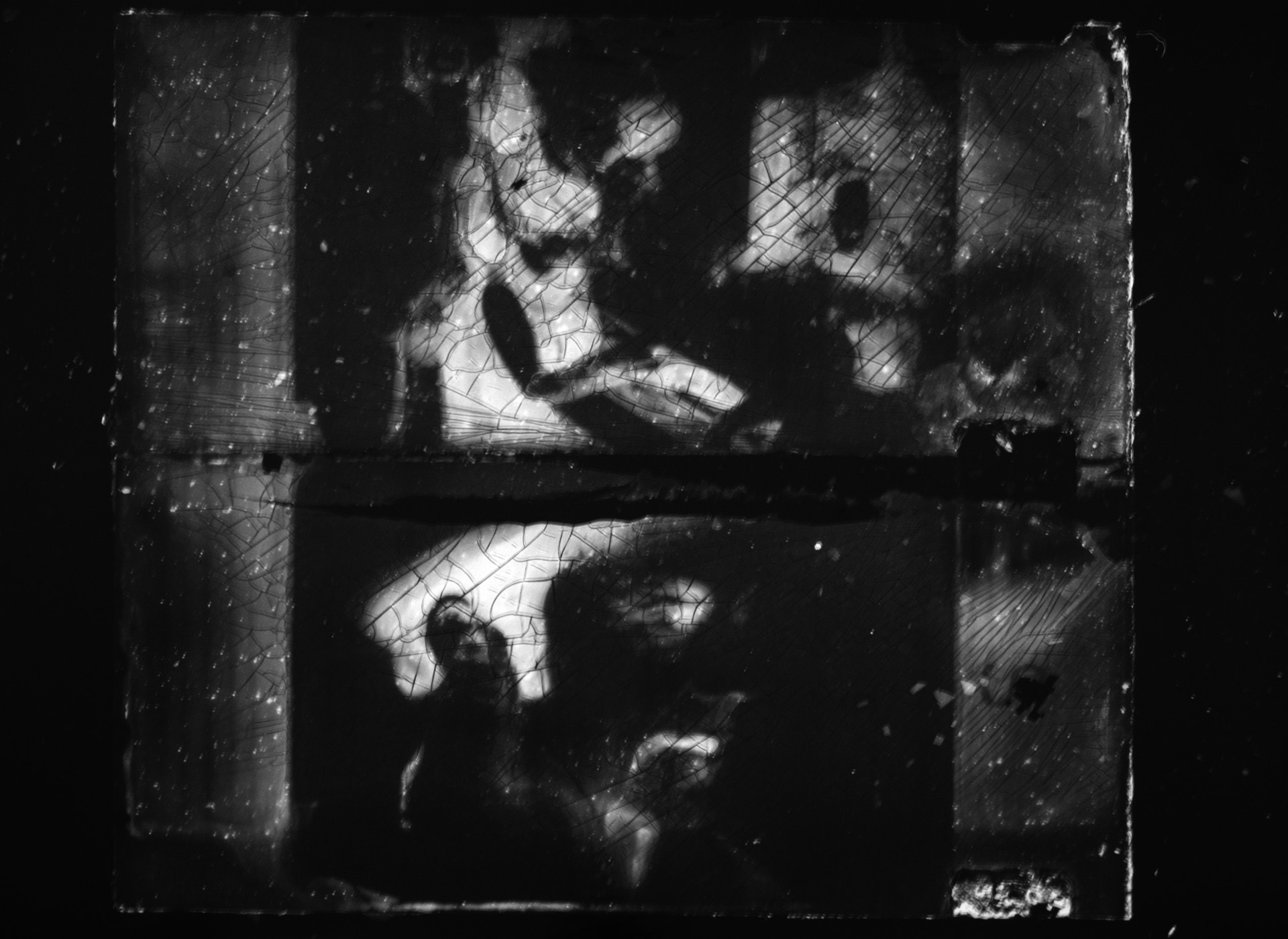 |
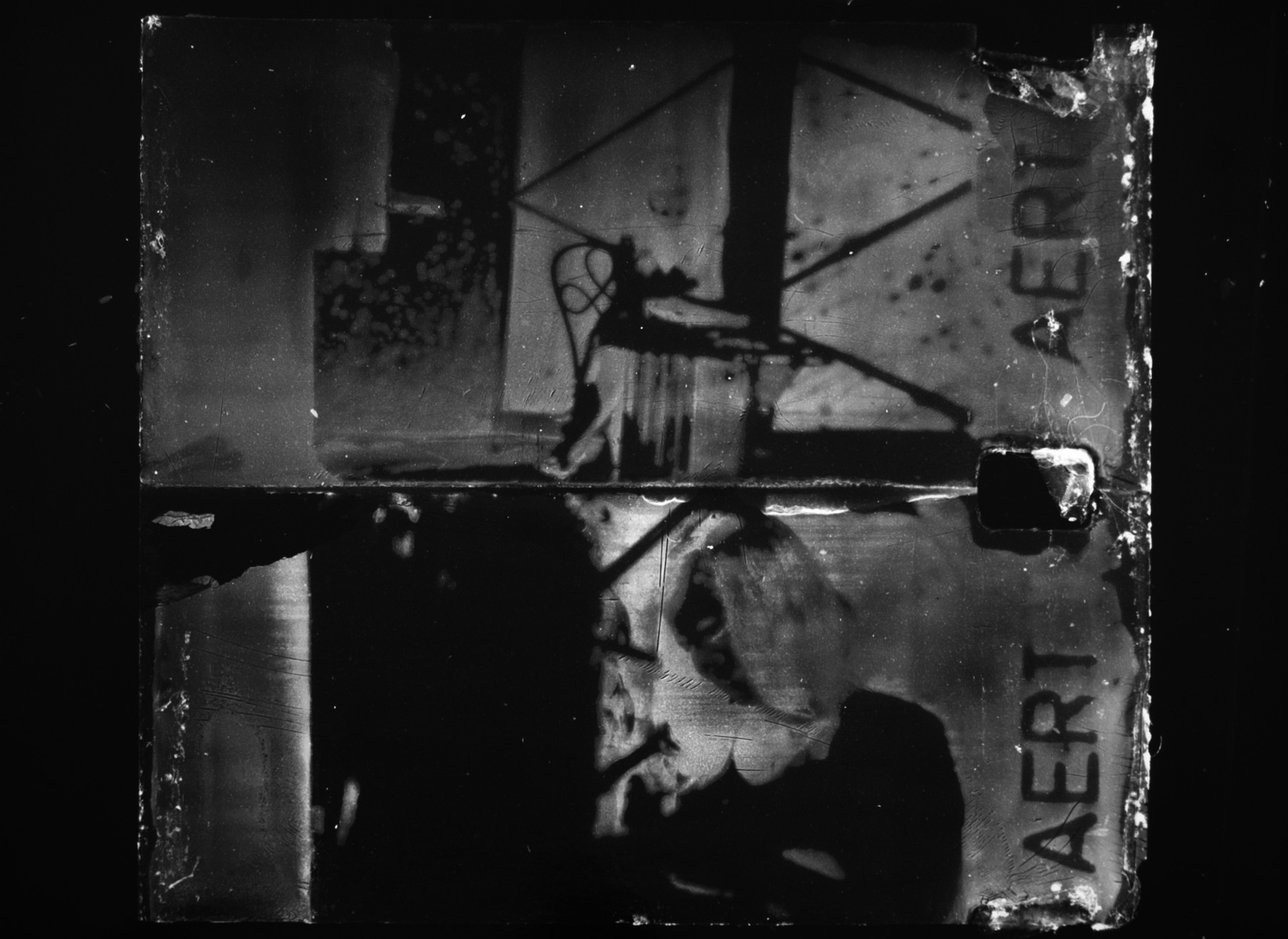 |
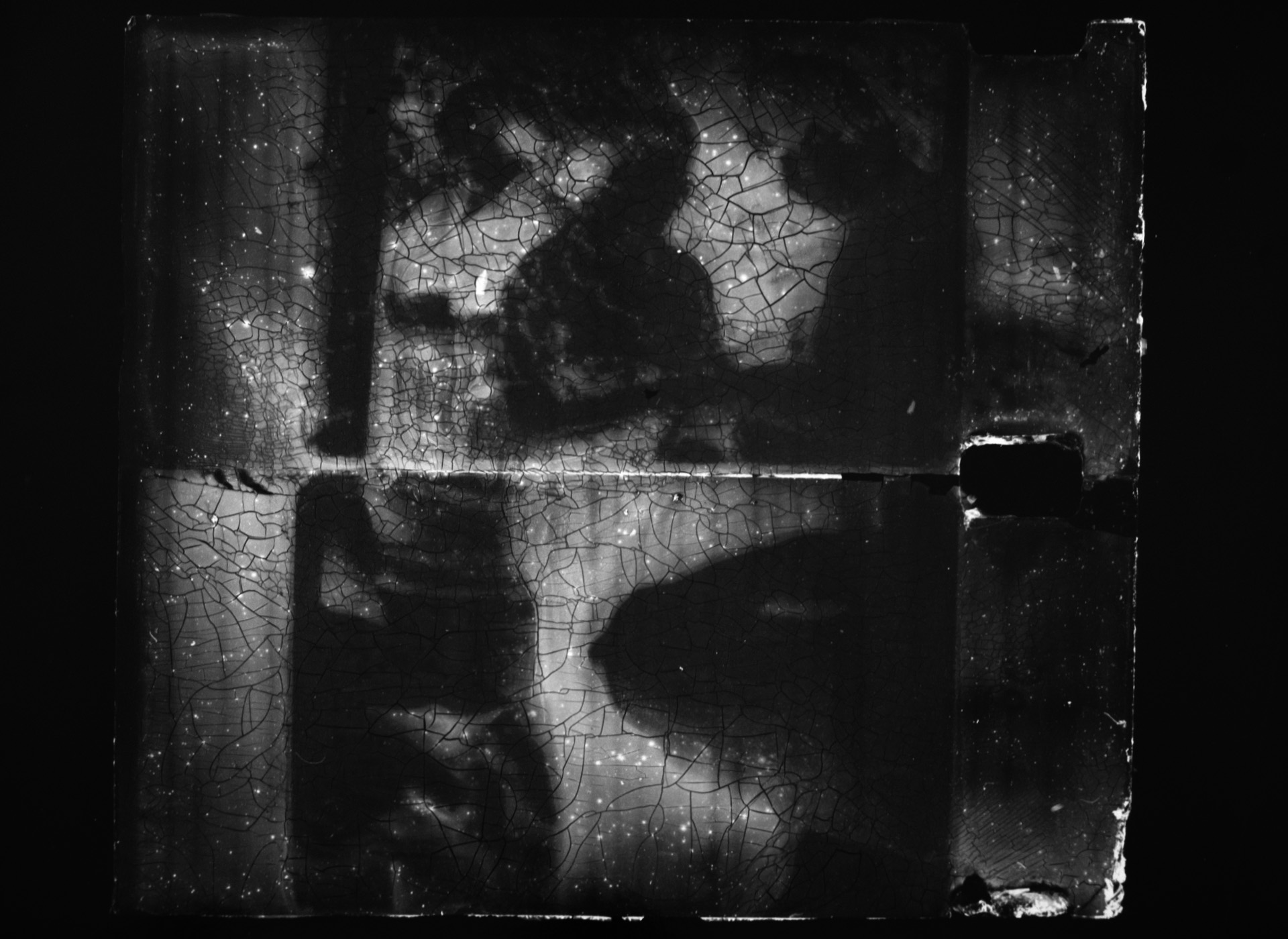 |
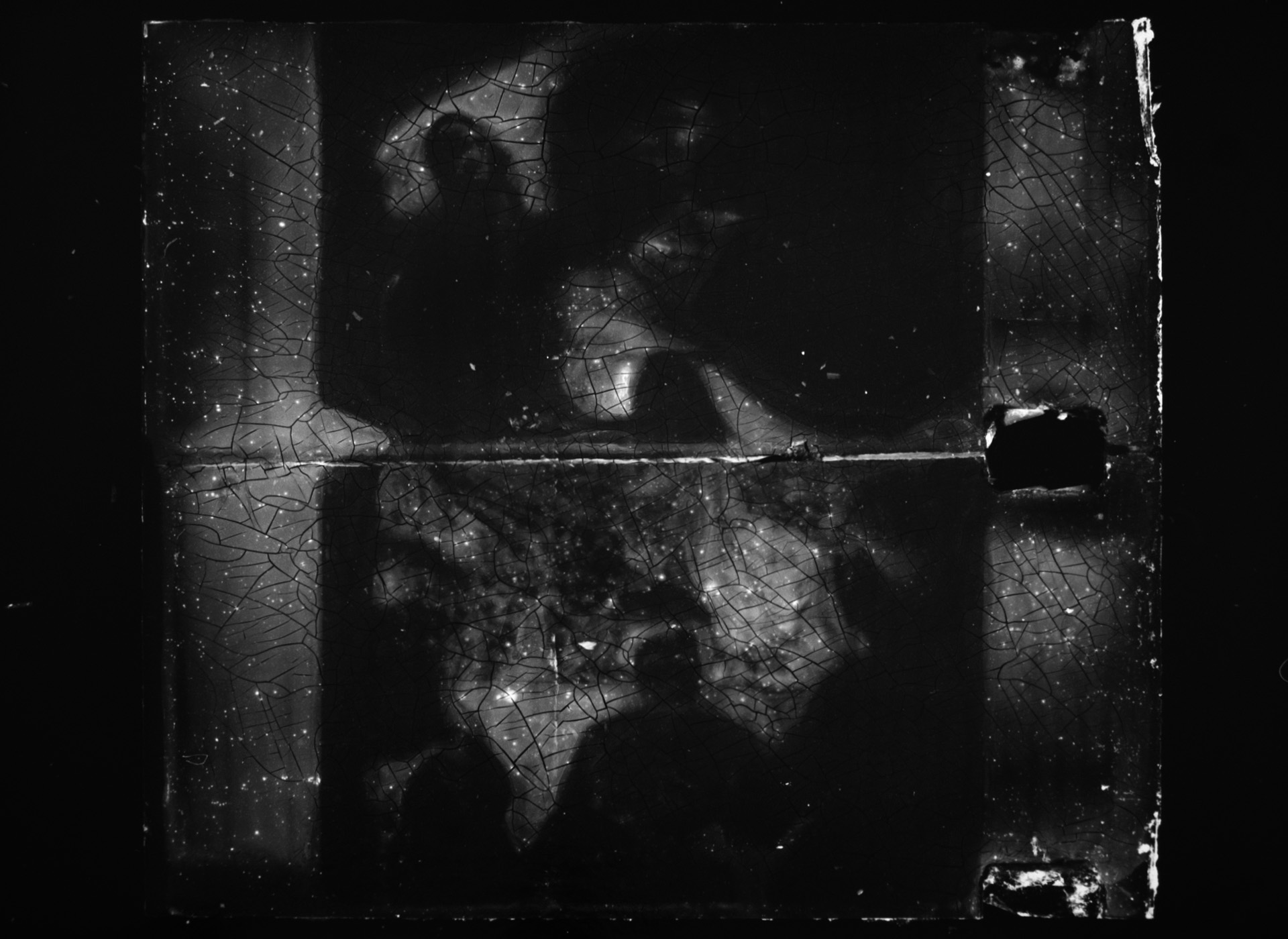 |
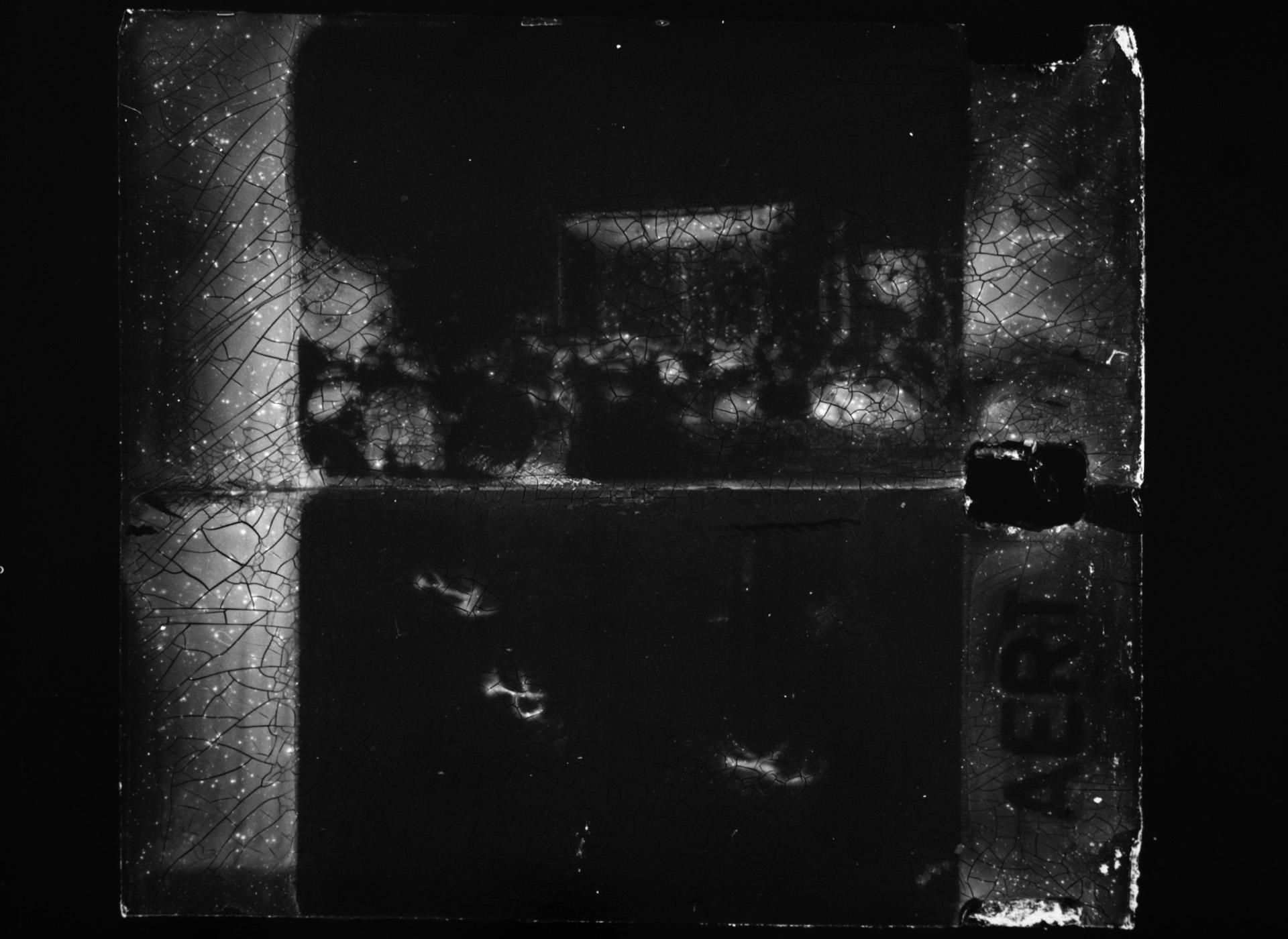 |
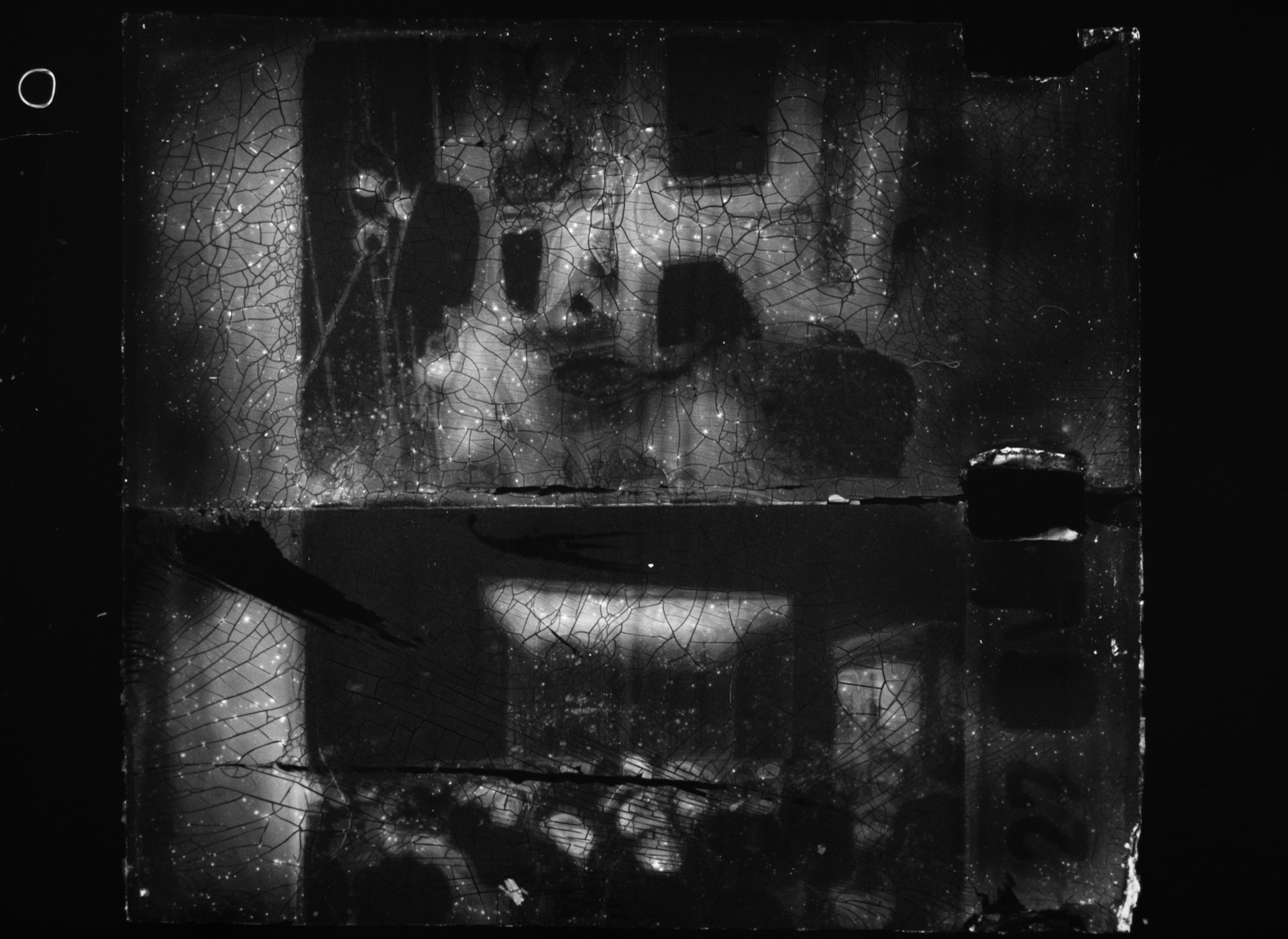 |
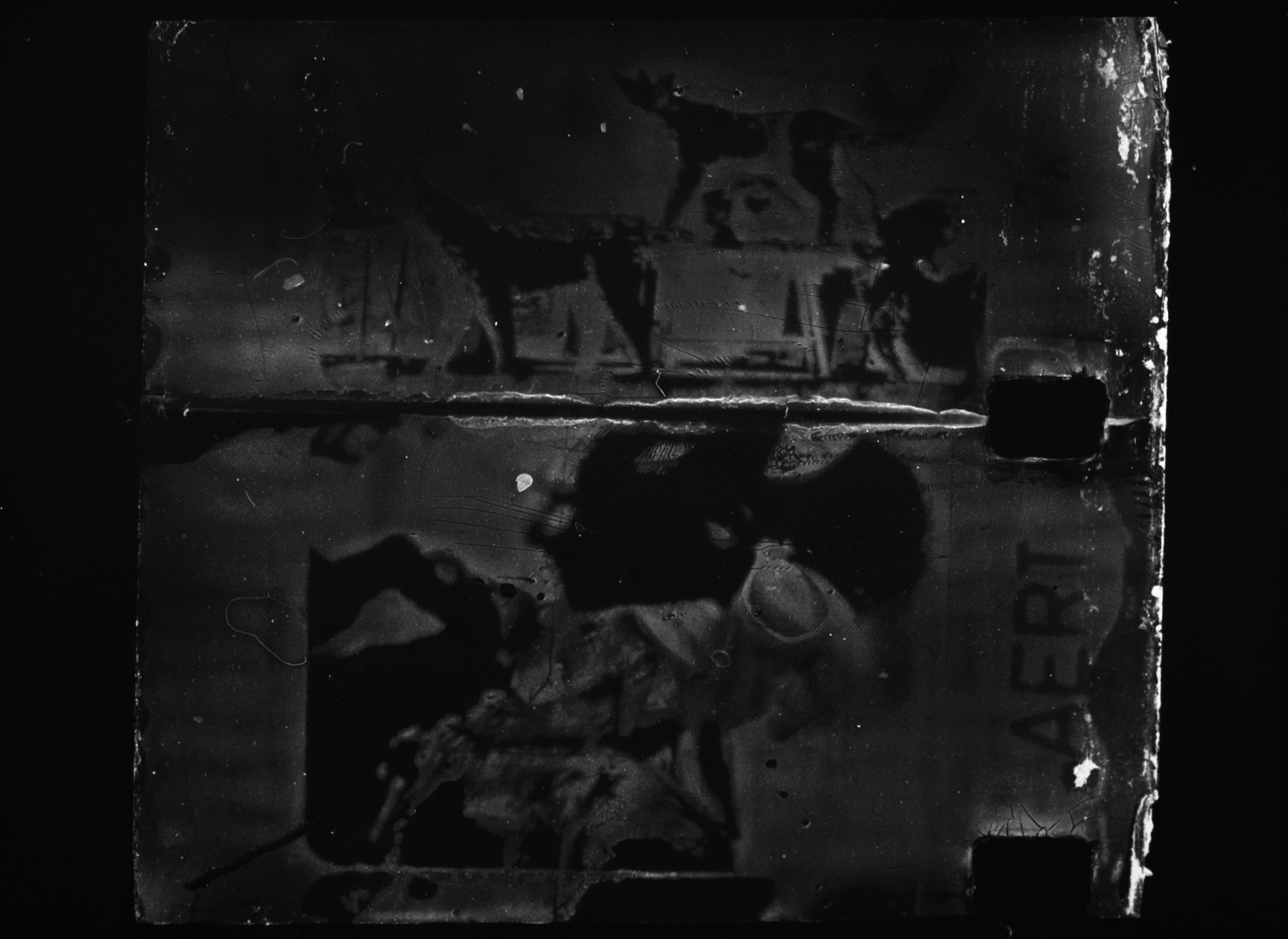 |
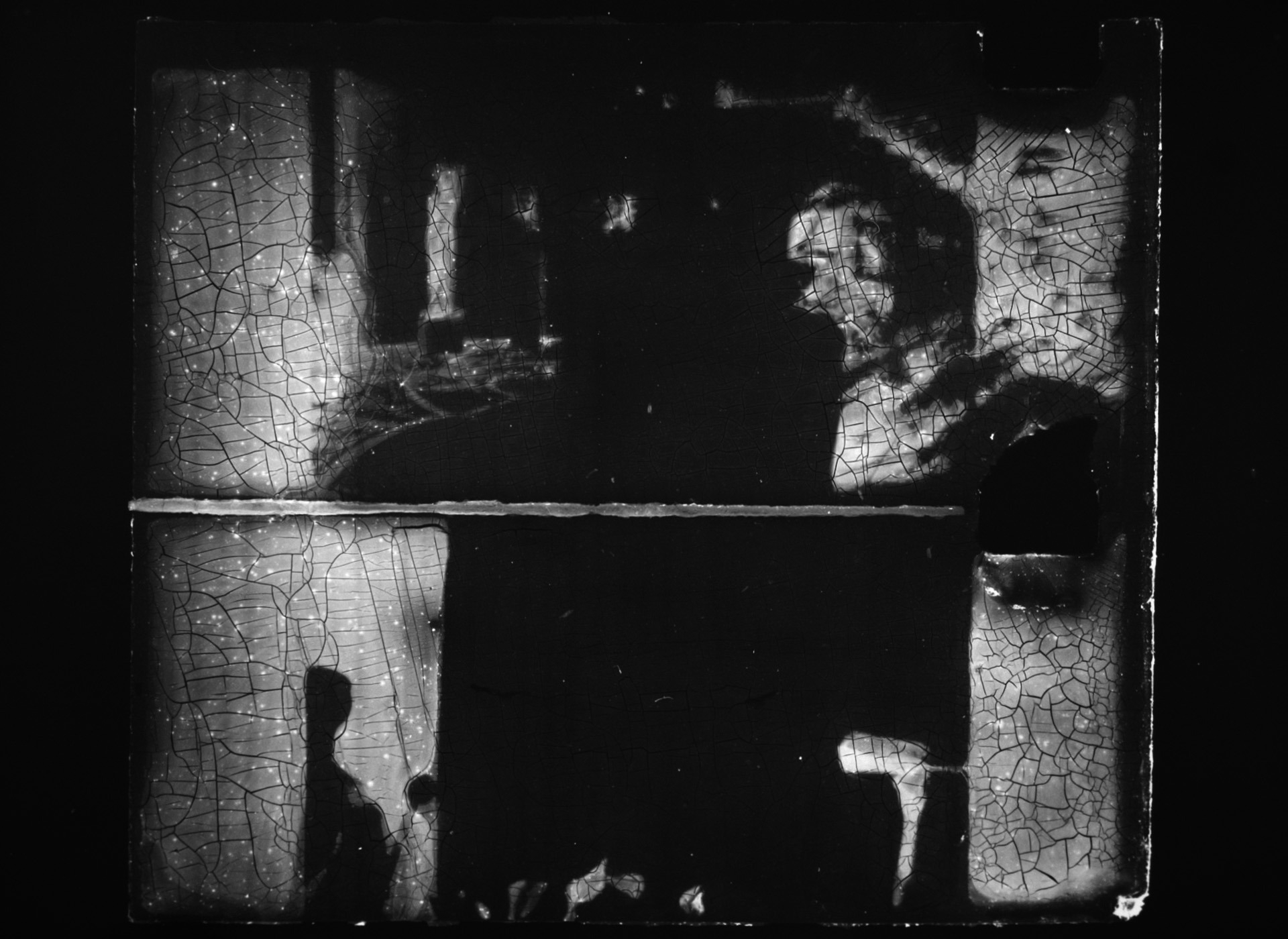 |
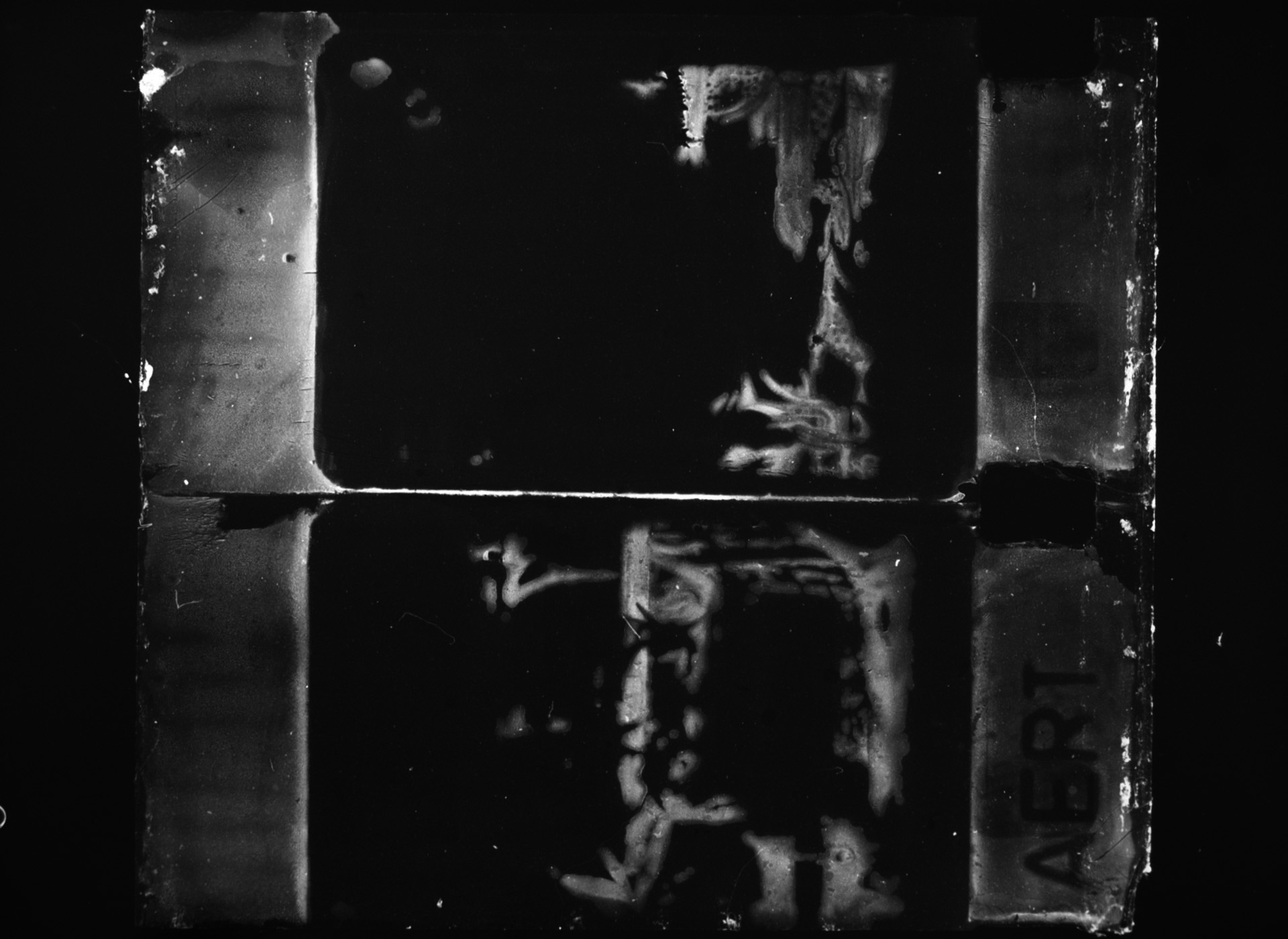 |
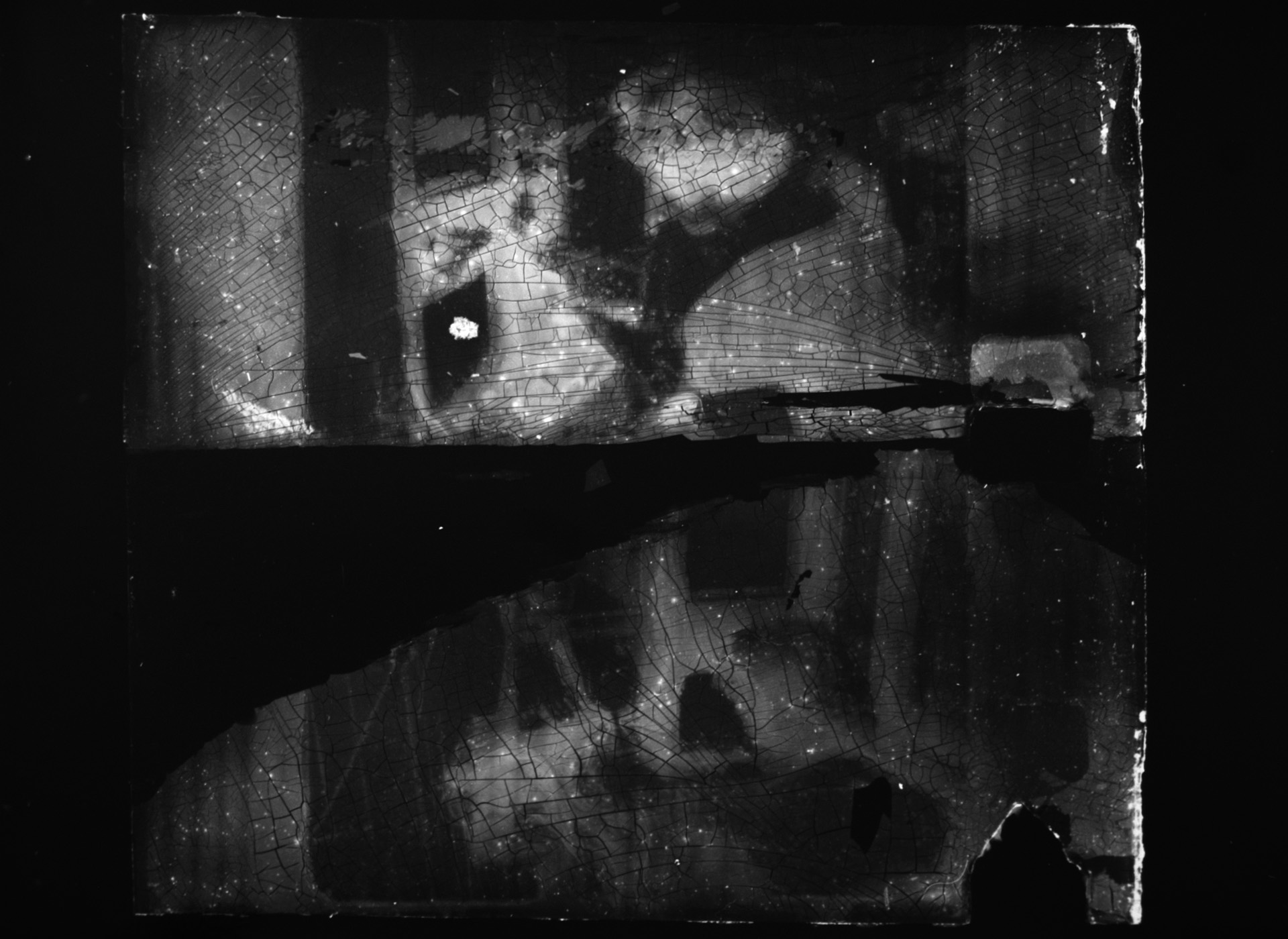 |
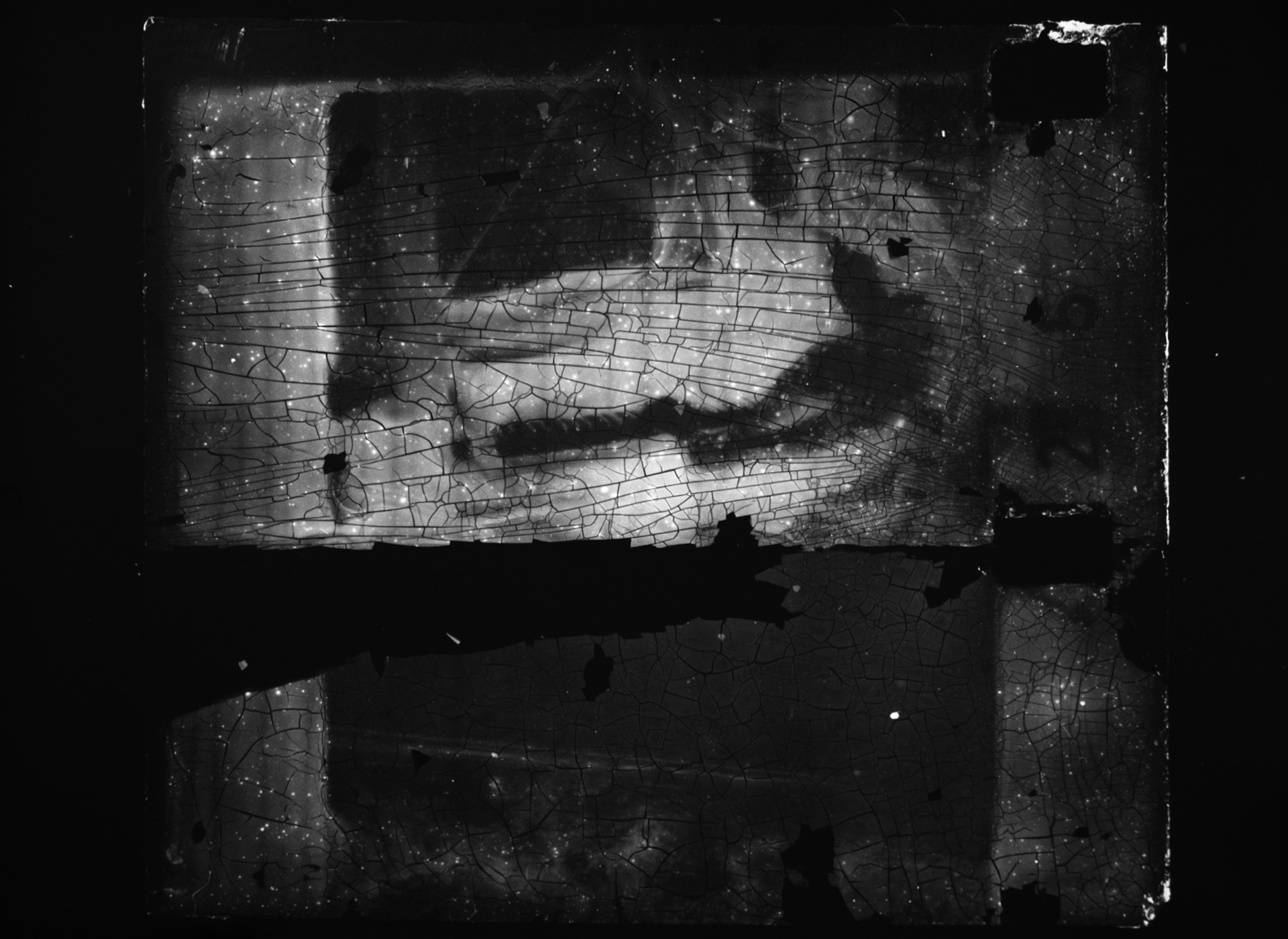 |
13 photographic prints (t17/g4,5) on ILFORD Multigrade IV, 24cm x 30cm.
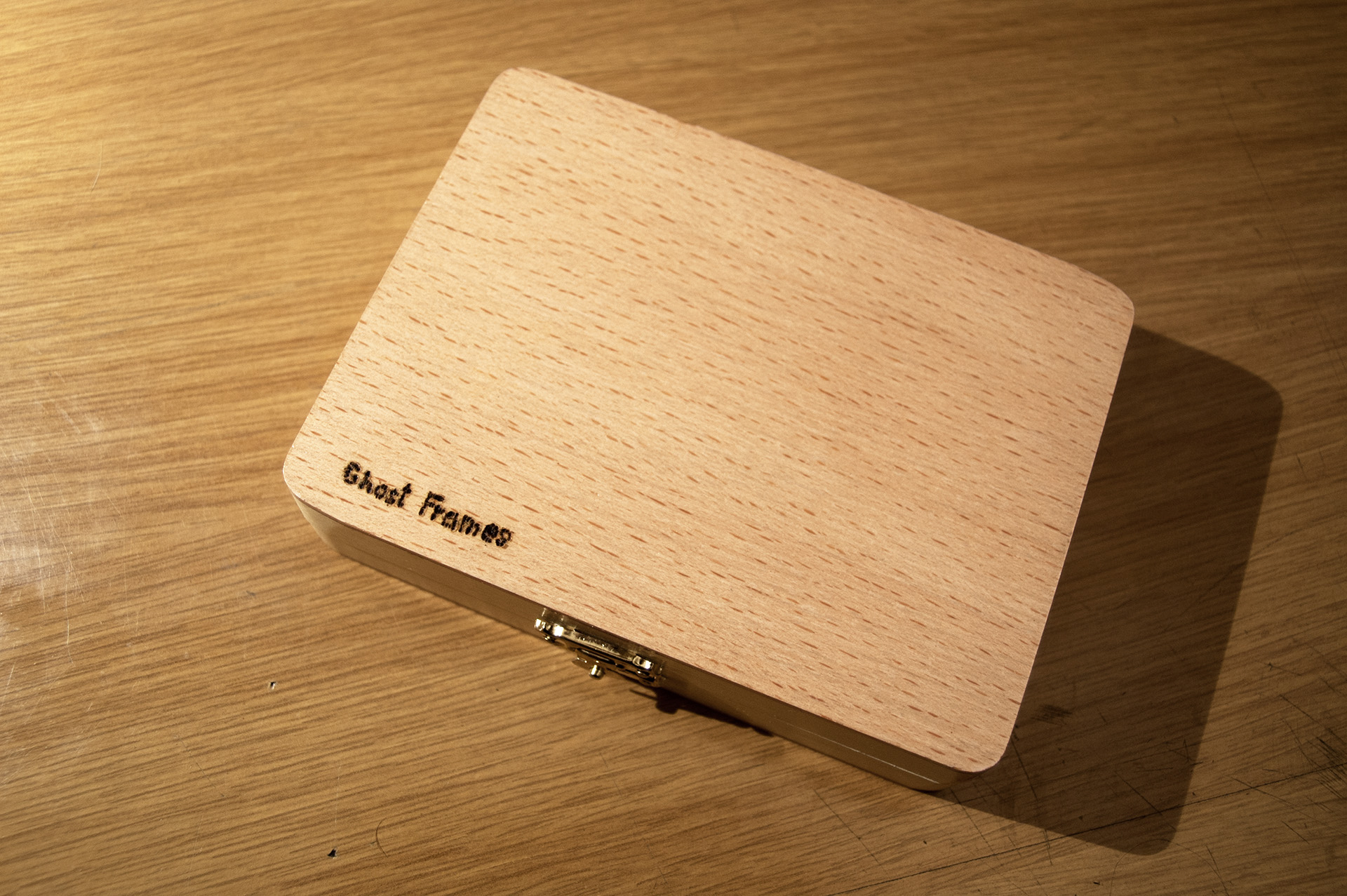 |
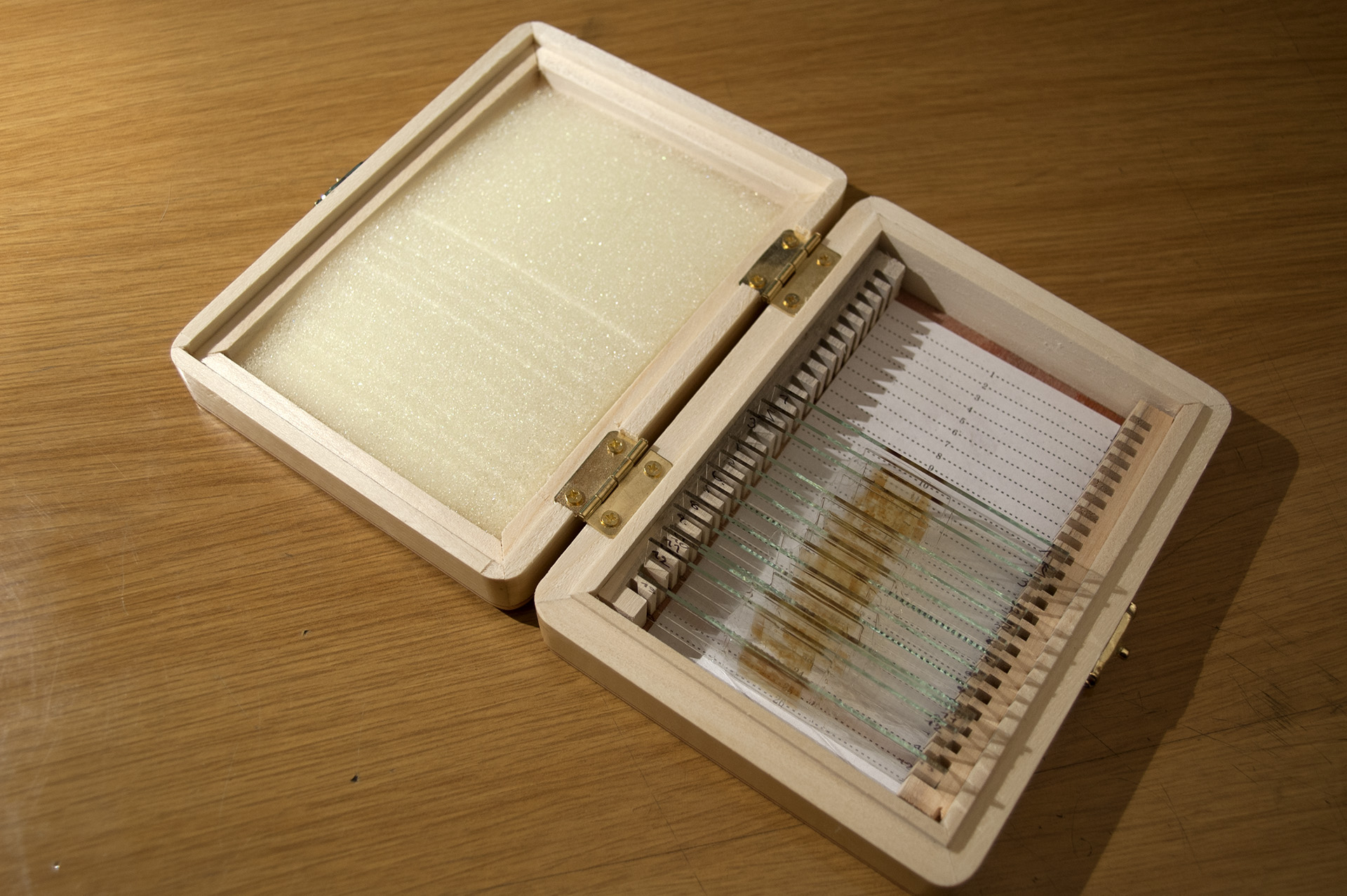 |
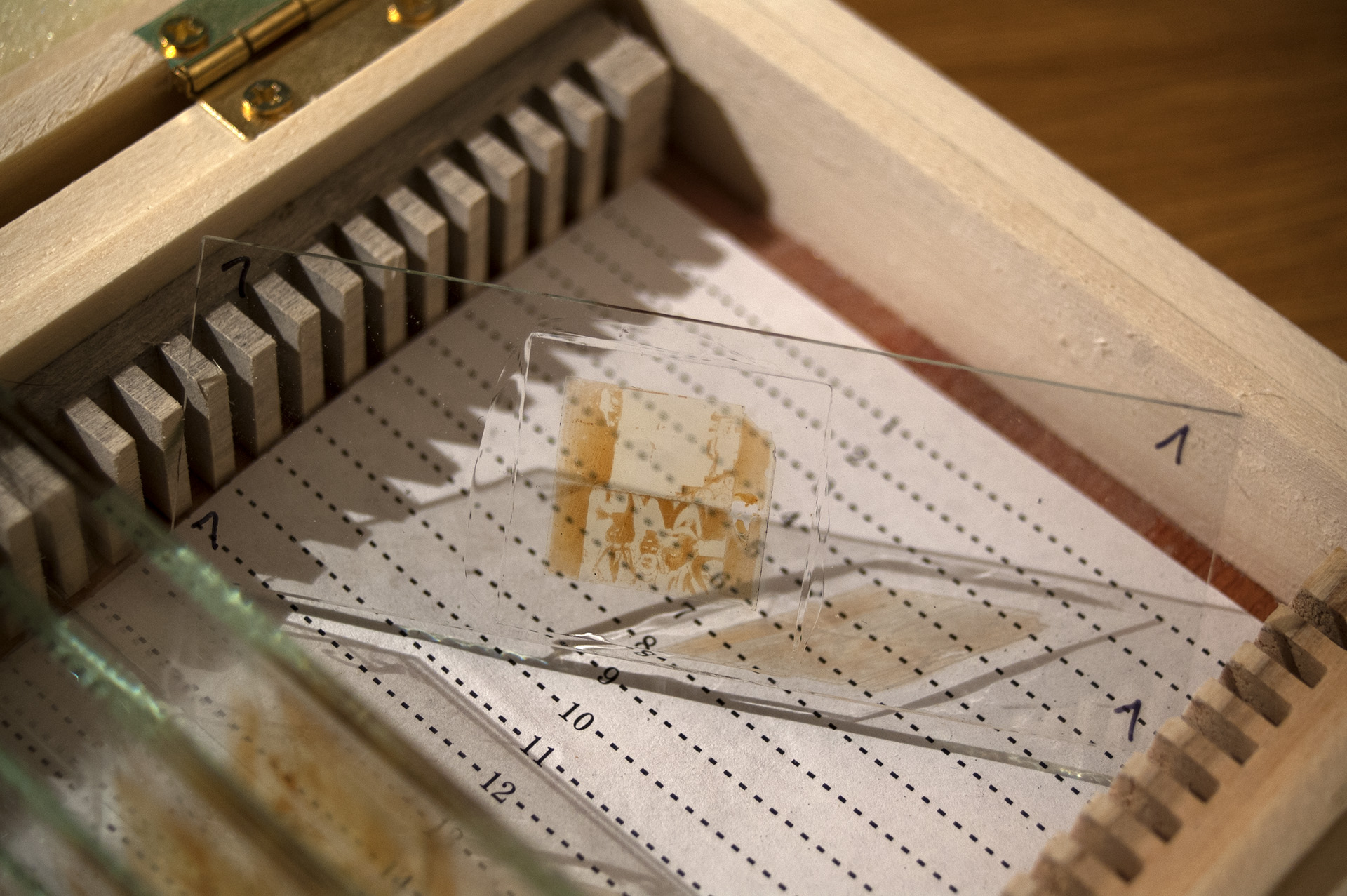 |
Splicing tape on glass microscope slides in wooden box.
Publication:
RESET THE APPARATUS!
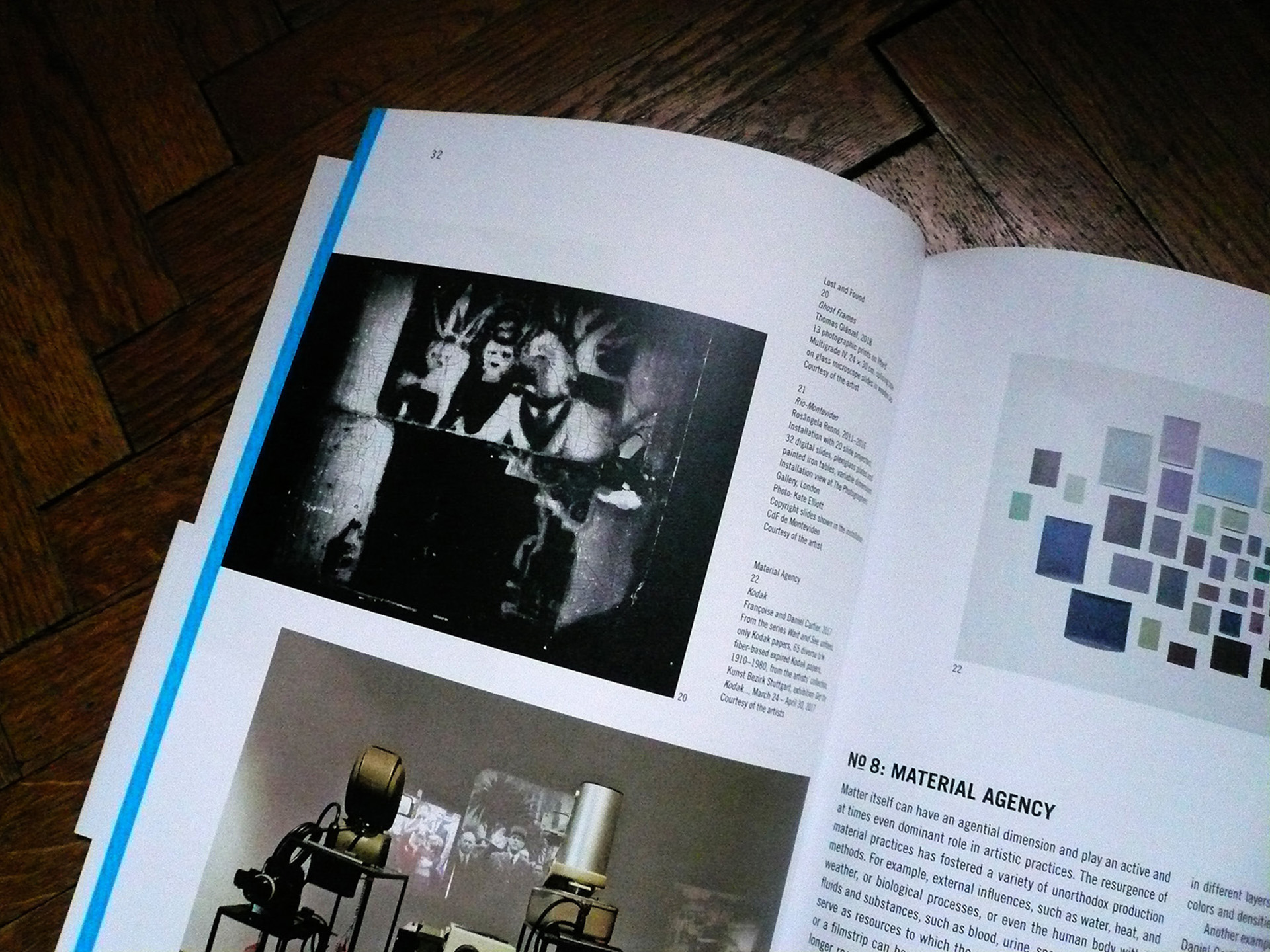 |
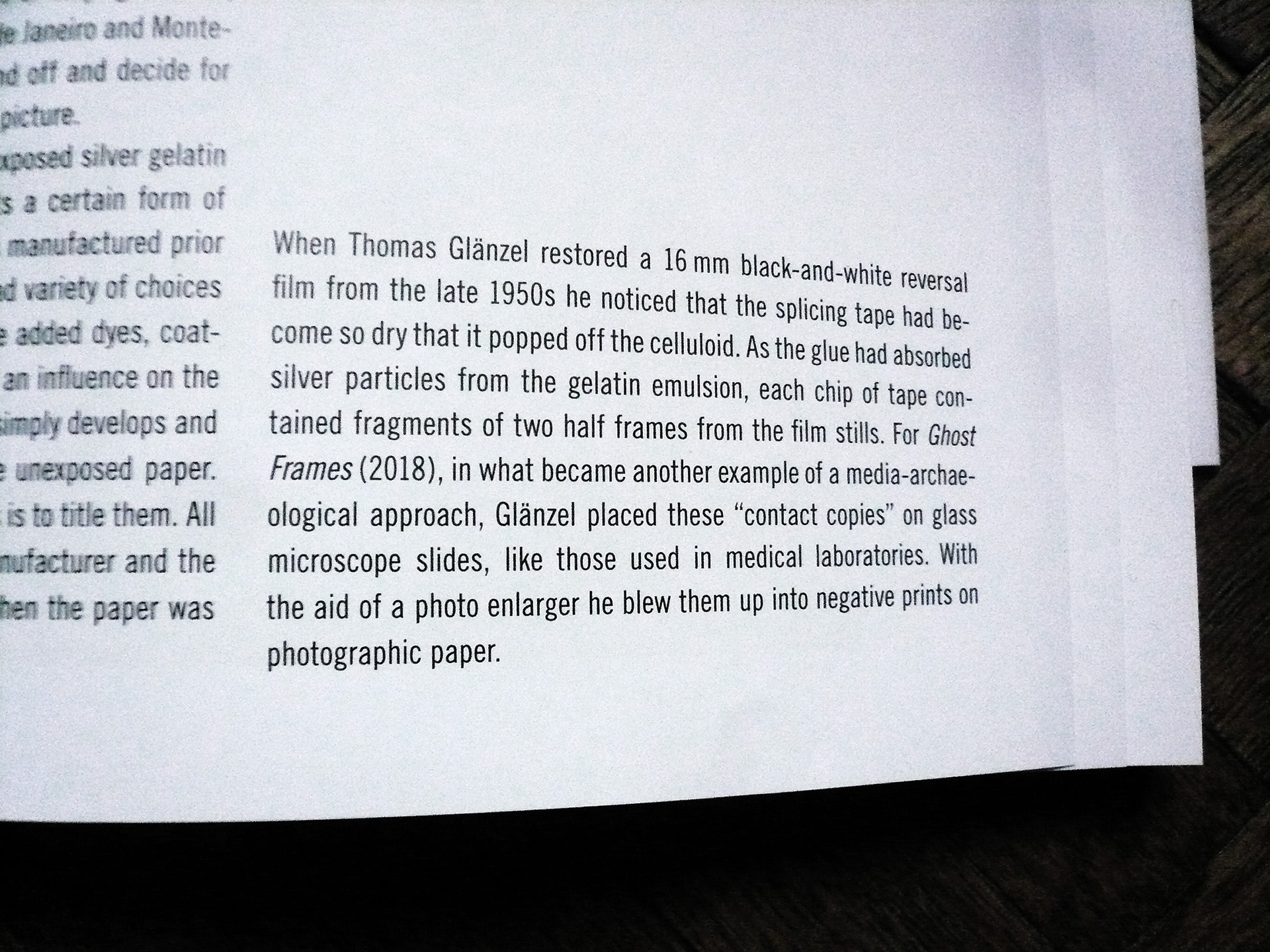 |
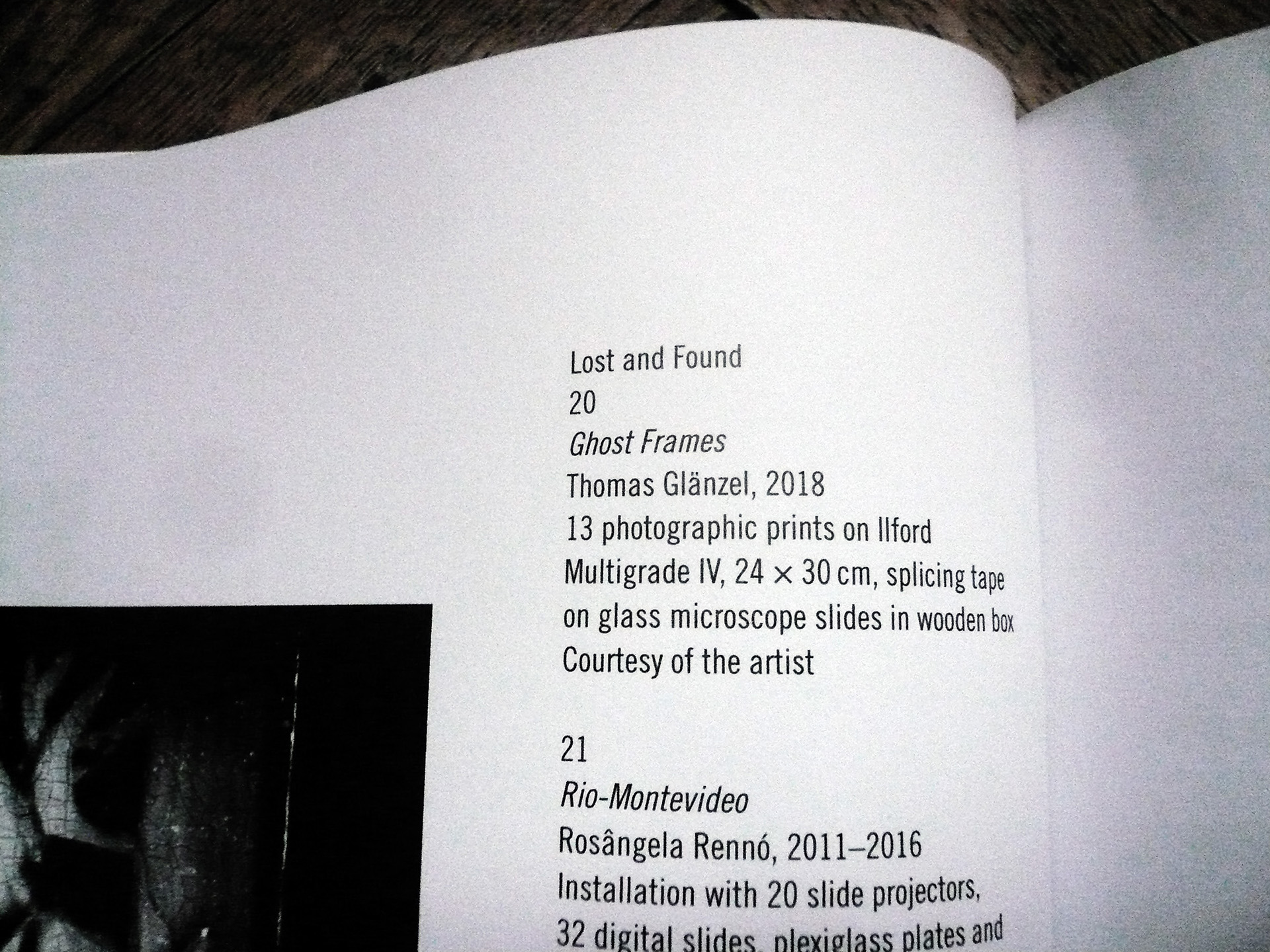 |
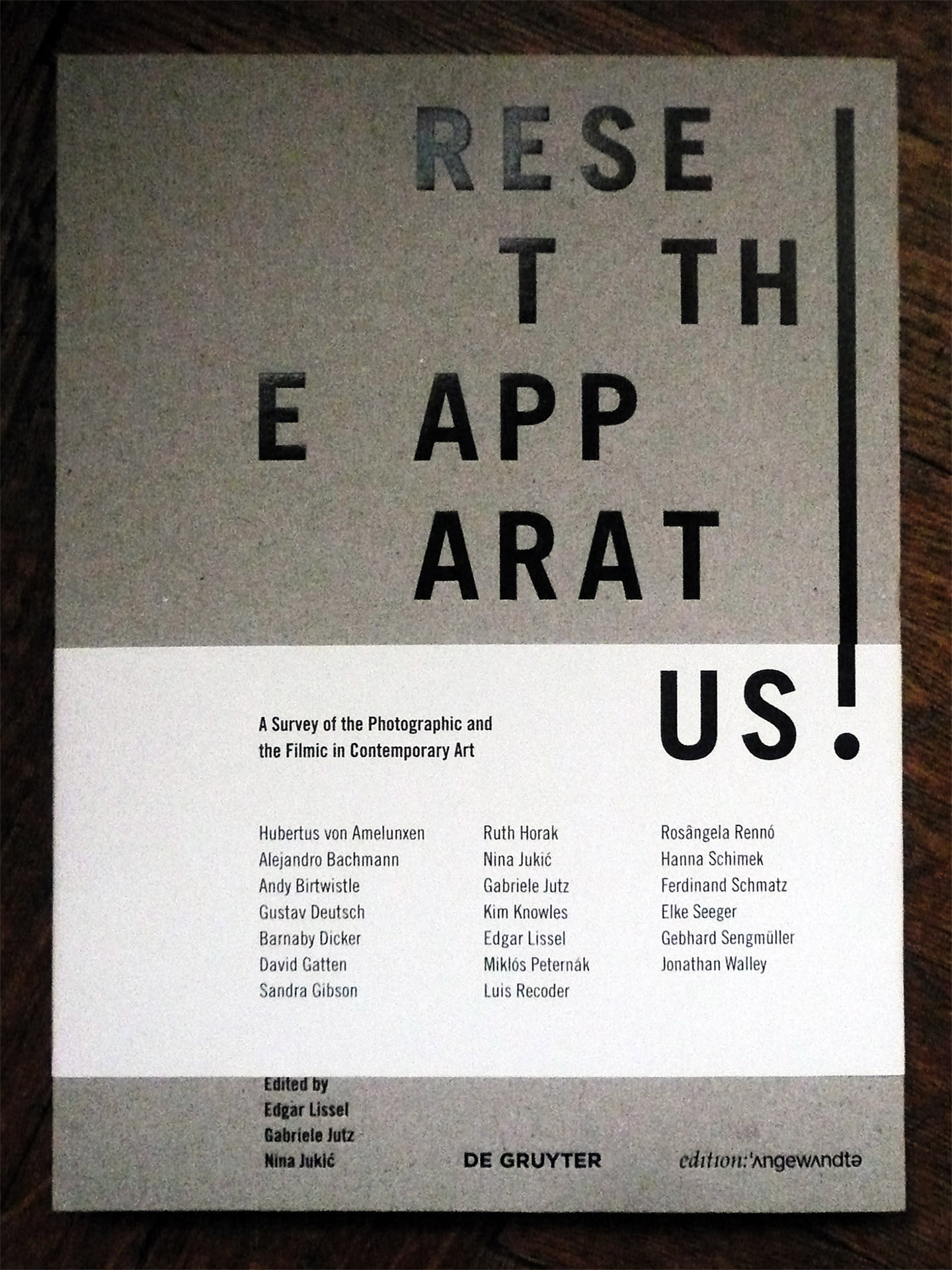 |
Vienna 2018
